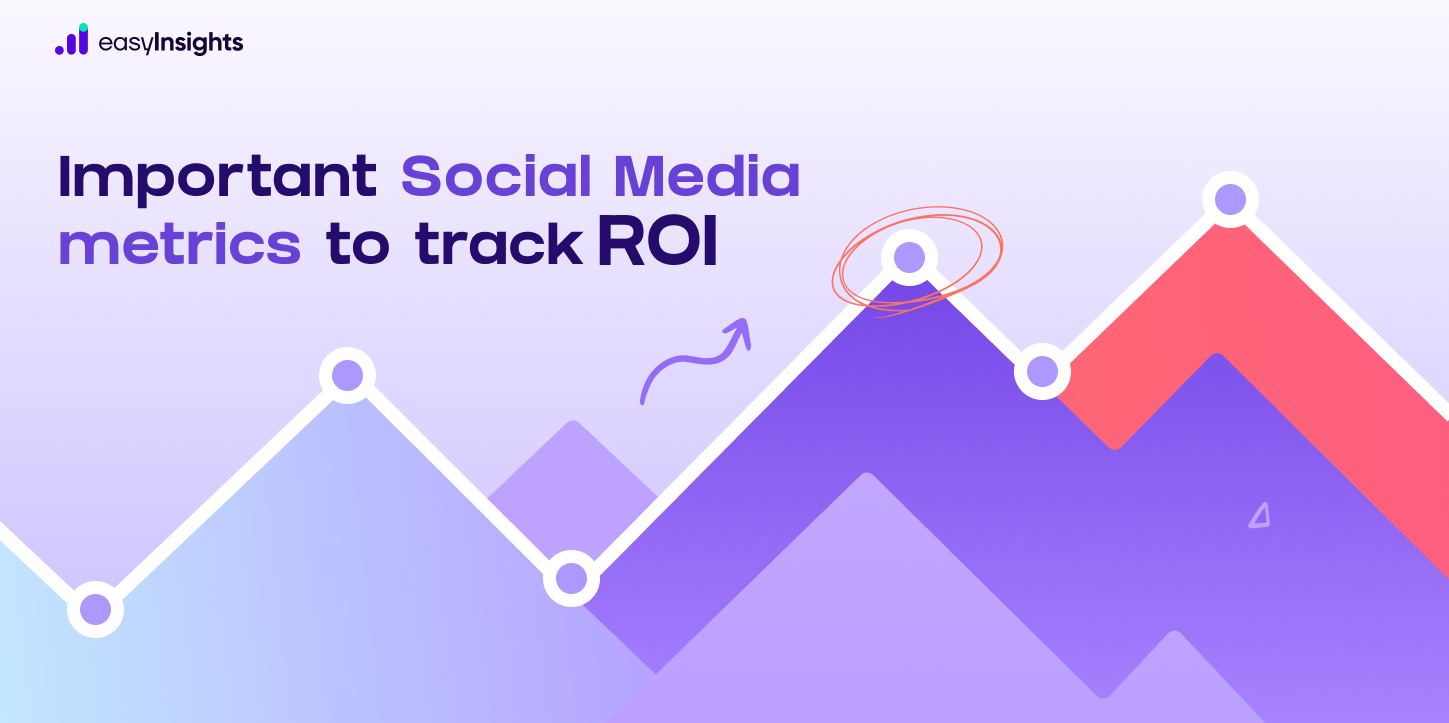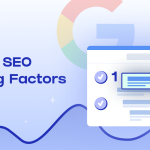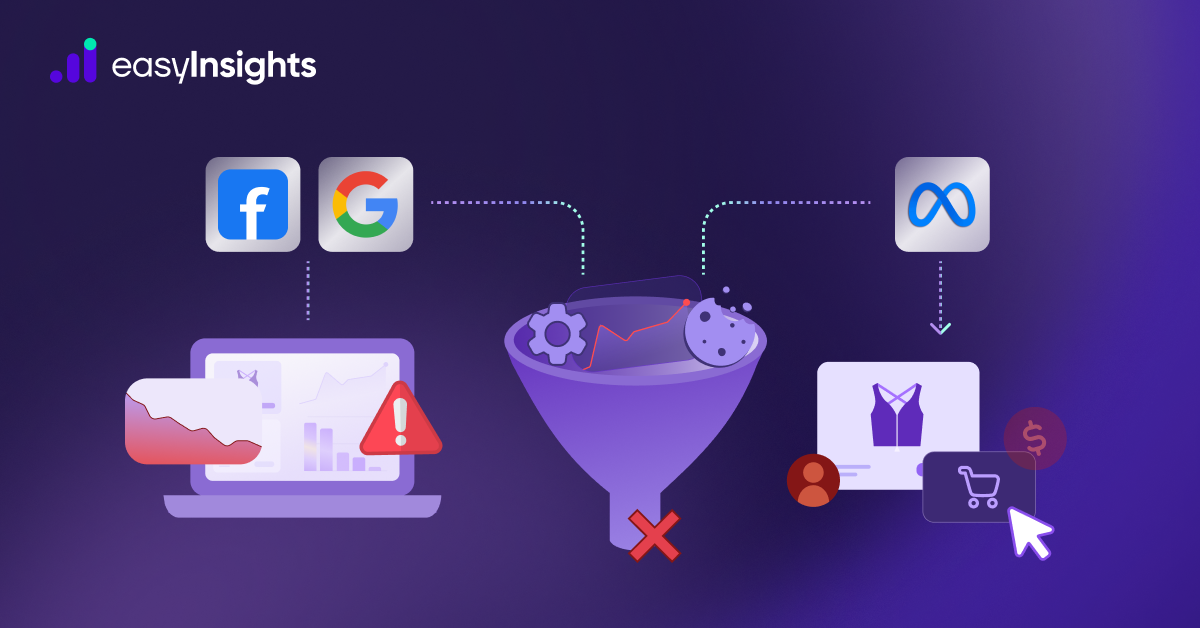
With an estimated 4.14 billion active social media users worldwide, most businesses can benefit from engaging in social media marketing. Social media has emerged as one of the most widely used platforms for digital advertising as its user base continues to increase. Understanding this fact and how social media affects your clients’ businesses is crucial if you are an advertising or marketing agency. Tracking the social media metrics will help you develop a well-informed strategy to generate positive ROI. This post will cover which social media metrics are crucial for tracking your clients’ returns on investment. (ROI)
Click here to learn about “Website Traffic Analytics – Metrics a digital marketers should track”.
Jump ahead to:
What are Social Media Marketing Metrics?
The data points that demonstrate the effectiveness of your social media strategy are known as social media metrics. Metrics are the foundation for continuous growth and progress because they help you understand anything from how many people view your content to how much money you make from social media. Your social media goals determine your metrics. Every goal needs a corresponding metric that can be used to assess if your social media strategy is working or not. With a goal in mind, you can choose with clarity which social media metrics to track and over what period.
Why should you track Social Media Metrics?
The most significant reason of tracking social metrics is that they keep you informed about the general health of your brand and social profiles; you can’t truly understand the value of your social media presence until you have the evidence to support it. Social media metrics are crucial since they demonstrate that you can evaluate a campaign’s performance, the effectiveness of your social media strategy, and ultimately if you will have an impact on your entire business. In addition to giving you the chance to demonstrate to executives the impact of your work, having these indicators can help your social team experience significant changes, such as budget increases and improved access to resources.
Why Are Social Media Marketing Metrics Important to Agencies?
Social media metrics let you know if your strategy is effective and point out areas for growth. They show how much time, money, and effort you invest and how much you receive in return. Without numbers, you won’t be able to comprehend how your company is performing on social media.
You can monitor social media metrics that are crucial to your client’s demands across various social media platforms to evaluate how well their social media plan is working. These analytics can provide you with information about your client’s social media following, amount of engagement, type of content that connects with followers, and more. By monitoring these analytics, you can assess the success of your client’s social media initiatives and spot potential areas of improvement. This will also help you to target new consumers and create fresh content ideas.
What are the important social media metrics that you need to track?
It is very important to track the right metrics. You can explore the native metrics available on each social media network. You may discover them on Facebook under the Insights tab. You go to Twitter Analytics by using the Twitter app. You will need business accounts to view your data on Instagram and Pinterest. However, we will discuss some of the most important social media marketing metrics that agencies use to track Return On Investment (ROI) for their clients. If you are an agency, an in-house team or even an individual, make sure you are tracking these metrics to track your ROI
But, let’s first take a look at the social media sales funnel before we discuss particular indicators to measure the performance of your social campaigns.
Social Media Sales Funnel
The social media sales funnel can be broadly divided into four stages:
- Awareness: Attracting new prospects and spreading awareness of your business are top-of-funnel tasks.
- Consideration: The middle of the funnel is all about getting individuals to consider your offers, such as browsing your products or downloading your sales materials.
- Conversion: At the bottom of the funnel, the goal is to persuade prospects to take the desired action, typically to make a purchase.
- Advocacy: After the initial conversion, you should monitor how successfully you are converting clients into passionate brand advocates and devoted fans.
11 Important Social Media Metrics To Track ROI for your client
Awareness Metrics
1. Reach
The number of people who view your material is known as reach. Monitoring both your overall reach and the reach of each post, story, or video is a good idea. The ratio of followers to non-followers in your reach is a proper subset of this metric.
2. Followers Growth Rate
The audience growth rate tracks the number of new social media followers your business acquires over a specific time. Track your net new followers (on each platform) during a reporting period to determine your audience growth rate. To determine your audience growth rate percentage, divide that figure by the entire audience you have (across all platforms).
Consideration Metrics
Metrics for social media engagement reveal how much a user engages with your content instead of merely viewing it.
3. Engagement Rate
The percentage of your audience that engages with your content (via reactions, comments, and shares) is known as the engagement rate. Consider calculating engagement in relation to your followers. But remember that not every one of your followers will view every post. Additionally, those who don’t (yet) follow you may engage with you. Divide total engagement, which includes likes, comments, shares, saves, and other actions, by the total number of followers to determine engagement per follower.
4. Website Traffic from Social Channels
Monitoring website traffic from social media is one of the best ways to evaluate how well your social media marketing is working. With the integration of Google Analytics, it is possible to track visitors from various channels and measure social traffic.
5. Click Through Rate (CTR)
How frequently readers click a link in your post to obtain extra content is known as the click-through rate, or CTR. Anything from a blog article to an online store could be that. The CTR tells you how many people viewed your social media content and clicked to learn more. It’s a reliable indicator of how effectively your social media content advertises your product. Divide the total number of clicks for an article by the total number of impressions to determine CTR.
Conversion Metrics
6. Conversion Rate
The conversion rate measures how frequently social media posts lead to conversion events like downloads, sales, or subscriptions. Since it indicates the importance of your social content to feed your funnel, this is one of the most crucial social media marketing indicators.
7. Cost-Per-Click (CPC)
The cost-per-click, or CPC, is the price you pay each time a user clicks on a social advertisement. You may put this statistic in vital context by knowing your company’s average order value or even the lifetime value of a customer. If your conversion rate is strong and your client lifetime value is high, you may afford to pay more per click to attract website visitors in the first place.
8. Cost Per Thousand Impressions (CPM)
The term “cost per thousand impressions,” or CPM, means exactly what it says. It represents the price you pay for each 1,000 impressions of your social media advertisement. The focus of CPM is views, not actions.
9. Return on Ad Spend (ROAS)
You should monitor the return on ad spend if you plan to use social media advertising (ROAS). The advertisements manager on most social ad platforms will have this measure available.
Advocacy Metrics
10. Reviews or Feedback
Using a reputation management solution and monitoring customer reviews is one approach to measure advocacy. Customer reviews and user-generated content are excellent for upcoming posts, even if the review wasn’t published on a social media platform.
11. Response Time
The amount of time it takes a social media user to respond to a message is known as the reply time. Metrics for messaging track how consumers respond with messages. Businesses should care about reply times and messaging metrics because they can give them insight into how customers engage with their brand on social media.
Final Words
Social networking sites give you a lot of information about your audience. You can establish precise objectives and monitor your progress towards them by concentrating on the most important metrics. We’ve selected the most crucial indicators that are important for most businesses. To summarise, metrics are crucial since they indicate the durability of the success of a campaign or strategy. We hope this article helped you understand the essential social media metrics you need to track.
Click here to learn about “Shopify Metrics You Should be Tracking”.








